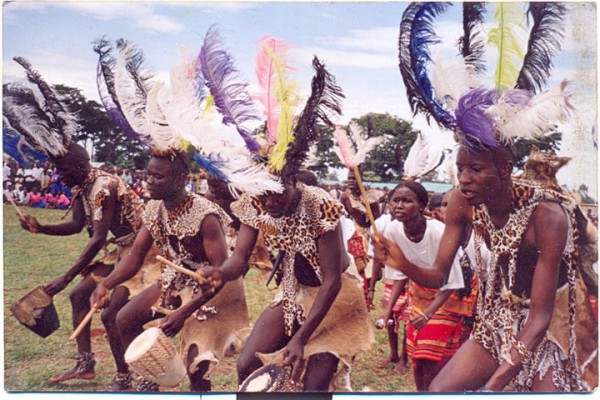The Music of other Tribes in Uganda
The basoga are the people located in the eastern part of the Uganda and they have so many similarities with the Baganda. Their culture, di...
http://worldhitz4u.blogspot.com/2014/03/the-music-of-other-tribes-in-uganda.html
The
basoga are the people located in the eastern part of the Uganda and they have
so many similarities with the Baganda. Their culture, dialect and music are related
to the baganda. They also have a similar xylophone known as embaire that plays
an important part and it is principally used in the busoga court, the compulsory
principles of embarire music are related to those of the amadinda music if
Buganda. The basoga use procession pattern rudiments in their dances, with females
taking a lead part. Energetic gyrating of the hips and waist is the most common
pattern of the dance.

source of picture: www.singingwells.org
The
Bagisu are also seen in the eastern part of Uganda and their music is known as
kadodi, it is one of the most shared folk music patterns and it is regularly
used in festivities within the country even by peoples of diverse peoples. This
is extremely because of its dance oriented nature; this employs every enjoyable
drumming pattern that inspired wild dancing. The music is primarily used during
circumcision occasions, where young boys are initiated into the manhood.
Circumcision is known as imbalu. Other dances of the bagisu include the
following dance known as mabega, which involves energetic shaking of the
shoulders.
The
west of the Uganda is known as Banvankore and they are large in tribe. Their
music is more graceful when compared to other peoples and involves gradual and
simplistic drumming. The dancing pattern includes jumping and gesturing of the
arms and is timed to perfection so as to coincide with the percussion. In the
west also are the Banyoro and Batoro who use a music pattern known as runyege
that includes clangers attached to the feet of male dancers who dance with
female countrywomen in a specific manner so as to make music with their legs.
In
the northern part of the Uganda, different tribes such as the Acholi and the
Langi have their own patterns of music. The okeme, which is a thumb piano, is
famous in this area since having been introduced during in the early 20th
century by the Congolese porters. Locally made papyrus flutes are also shared.
Choral are delivered in a group by different singers, most time male. Regular
stomping and jumping, with shaking of the head and neck, are common features of
dance from this section of the country.
These
are few examples of the different tribes and culture groups in the country with
their related patterns of music and dance. There are many more tribes though
their music has not been well studied and recorded.
